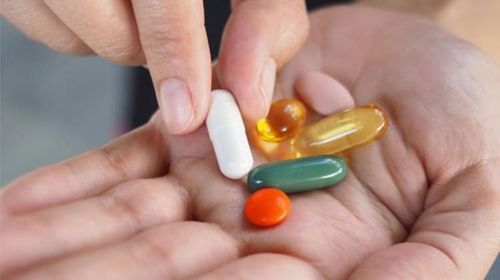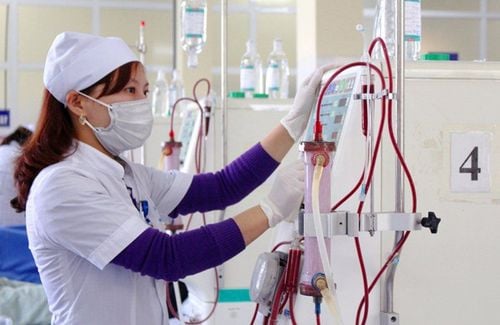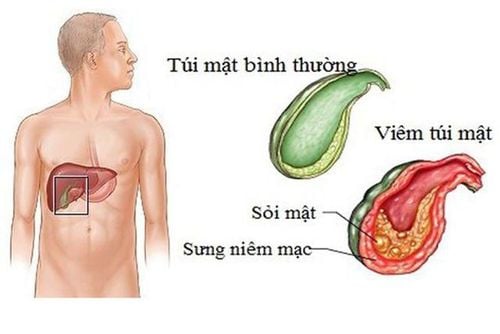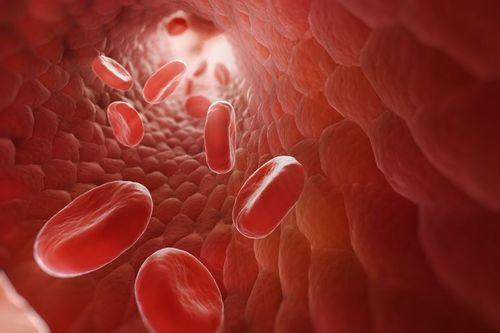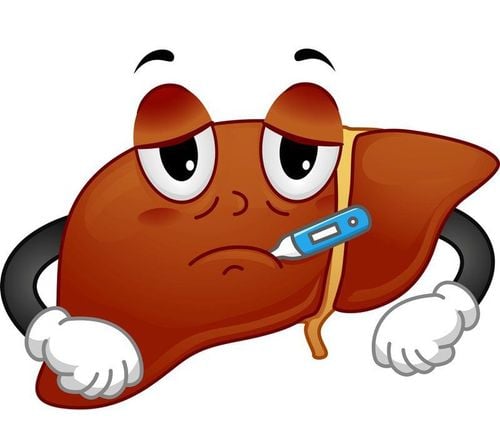This is an automatically translated article.
Septic shock is a shock state that occurs as a serious complication of sepsis, which, if not treated promptly, will lead to cell damage, multi-organ damage and death.
1. Septic shock
1.1. Some definitions of septic shock Septic shock is the end stage, a complication of an infection that goes through several stages:
Stage 1: Infection: Is the body's inflammatory response to a microbial agent object. Stage 2: Systemic Inflammatory Response Syndrome (SIRS): Presence of at least 2 out of 4 of the following criteria (of which at least one is temperature or white blood cell count): Fever > 38.5°C or hypothermia <36°C (monitor core temperature). Tachycardia with age or bradycardia in children under 1 year of age. Rapid breathing with age. WBCs increase or decrease with age (adults >12,000/mm3 or <4,000/mm3) or leukocytes >10%. Stage 3: Sepsis or systemic infection: A systemic inflammatory response syndrome, caused by infection. Stage 4: Severe sepsis (severe sepsis): Sepsis with cardiovascular organ dysfunction or acute respiratory distress syndrome or dysfunction of at least 2 other organs. Stage 5: Septic shock: Septicemia with cardiovascular organ dysfunction.

1.2. Hemodynamic definition of septic shock: Hot shock: Decreased perfusion manifested by altered consciousness, rapid skin recovery (flash), peripheral pulse spike, fast sinking (bounding), decreased urine volume < 1 ml/kg/hour. Cold shock: Decreased perfusion manifested by changes in consciousness, refill > 2s, decreased peripheral pulse, cold and moist extremities. Usually late stage of the disease. Fluid-resistant/dopamine-resistant shock: Shock persists despite infusion of > 60 ml/kg (appropriate duration) / when shock persists despite administration of up to 10 μg/kg/min dopamine. Anti-catecholamine shock: Shock persists, even when norepinephrine or epinephrine is used (norepinephrine dose > 0.1 μg/kg/min). Refractory shock: shock that persists despite inotropes, vasopressors, vasodilators, blood sugar regulators, calcium, and hormone replacement therapy (thyroid, corticosteroids, and insulin). Multi-organ dysfunction syndrome: Starting from the stage of severe infection, the function of organs will be disturbed. Multi-organ dysfunction syndrome is when two or more organs are dysfunctional. Organ dysfunction criteria: Cardiovascular dysfunction: when a child receives 0.9% NaCl infusion at a dose of 40ml/kg/hour but BP is still reduced or requires vasopressors to maintain blood pressure in the normal range. normal limit (Dopamine > 5 mg/kg/min or Dobutamine, Epinephrine at any dose) or 2 criteria (hypoperfusion) of the following: Metabolic acidosis (BE < - 5 mEq/l ) cannot be explained. Arterial lactate greater than 2 times the normal value (> 4mmol/l). Oliguria: < 0.5 ml/kg/h. Refill >5 seconds. Peripheral temperature is > 3 degrees Celsius lower than core temperature. Respiratory dysfunction: having one of the following criteria PaO2/FIO2 < 300 (without congenital cyanotic heart or previous lung disease. PaCO2 > 65 torr or > 20 mmHg increase from baseline. FiO2 > 50% is required to maintain SaO2 > 92% or mechanical ventilation is needed. Neurological dysfunction: Glasgow < 11 points or Glasgow decrease greater than 3 points from previous Hematological dysfunction: Platelet <80,000/mm3 or INR > 2. Renal dysfunction: When creatinine concentration is high Liver dysfunction: Bilirubin > 4 mg/dl birth) or ALT > 2 times the upper limit for age.
2. Causes of septic shock
Septic shock is a state of response of the whole body, occurs when infection with pathogenic bacteria leads to a drop in blood pressure along with symptoms of organ dysfunction due to anemia and lack of oxygen in the tissues. adequate volume of circulating fluid has been compensated. Viral and fungal infections can also cause septic shock.
3. Continuous emergency dialysis for patients with septic shock/multiple organ failure

Emergency continuous hemodialysis allows for continuous elimination (>12 hours/day) of water and solutes with a stool weight of less than 50,000 daltons, especially with large volumes of fluid replacement (≥ 35ml/kg/ hours) through the convection mechanism.
As a result, it helps to eliminate soluble substances with an average molecular weight similar to the weight of pro-inflammatory substances.
Emergency continuous dialysis also helps correct disorders of water, electrolytes, acid-base balance and is safe for patients with hemodynamic instability through convection and ultrafiltration.
Emergency continuous dialysis is currently being applied at most hospitals in Vinmec Health System. The emergency system strictly follows the procedure as well as ensures effective homeostasis. Along with a system of modern machinery and equipment, hospitals have been effectively treating people with septic shock both in terms of hemodynamics, pH changes and blood lactac with high success rates, if provided. Timely treatment almost leaves no complications.
Vinmec Hospital is currently using Fresenius' multiFiltrate continuous dialysis machine with many outstanding advantages such as:
Convenient and intuitive. Safe and easy to use. Full range of renal replacement therapy. Automatically help users find the possible cause as well as reasonably suggest how to solve the problem as quickly as possible when there is an alarm. The system can save up to 3,500 parameters and treatment-related problems during treatment. In which, doctors directly perform emergency dialysis for patients at the Emergency Department of hospitals:
Vinmec Da Nang Hospital: Dr. Nguyen Thai Tri and Dr. Dr. Tong van Hoan Vinmec Nha Trang: Doctor Le Viet Cuong, Doctor Le Hieu Hai Vinmec Phu Quoc: Doctor Tran Quoc Tuan, Doctor Pham Minh Quan, Doctor Luong Vo Quang Dang, Doctor Le Nguyen Tri Dung. Especially, up to now, only Vinmec Phu Quoc can do it on the island. Apply to ICU patients with indications for dialysis. Vinmec Times City : Emergency dialysis is conducted by intensive care physicians (ICUs).
Please dial HOTLINE for more information or register for an appointment HERE. Download MyVinmec app to make appointments faster and to manage your bookings easily.




